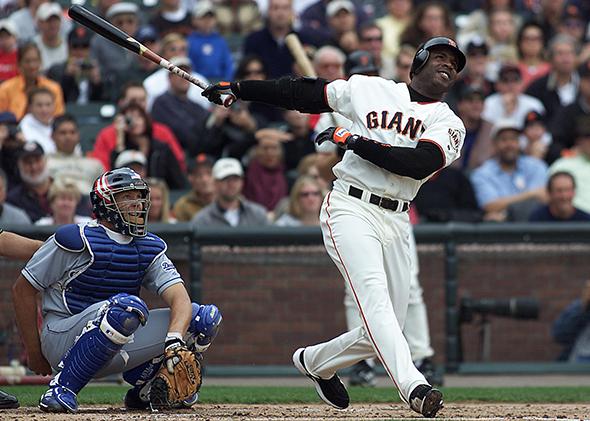When you write a book called How Not to Be Wrong, you ought to expect to be fact-checked a little. And one of the virtues of the new, data-driven journalism currently in vogue is the habit of going back and checking one’s own old stuff. We’re not supposed to avert our gaze from the howlers in our old columns. We’re supposed to find the mistakes and learn from them.
In that spirit I’m going to use the last entry in this blog to look over some of my old columns from Slate, with special attention to the times I blew it.
Overall, my record’s not too bad. Mathematicians over 30 have continued to make major theoretical advances. My criticism of Jonah Lehrer’s scientific sloppiness is looking pretty good. And Stephen Wolfram never did become the world’s most prominent and revolutionary scientist.
But there were some mistakes, too. Here are the three biggest.
Barry Bonds isn’t going to break the home run record. Bonds had 39 home runs in the 88 games making up the first half of the 2001 season, putting him on pace for a record-breaking 72 homers for the year. But I knew the theory of regression to the mean, which reminds us that the league leader in home runs at midseason is likely to have been both good and lucky, and thus isn’t apt to maintain his league-leading pace. Historically, typical league-leaders only hit two-thirds as many home runs in the second half as they did in the first. If that trend held in 2001, Bonds would finish the season with 61 home runs.
In fact, he increased his pace, ending up with 73 home runs and the all-time season record. My reasoning wasn’t bad. It’s just that I’d neglected the possibility that there was another factor besides natural ability and luck that was working in Bonds’ favor.
Political polarization isn’t spinning out of control. Also in 2001, I wrote about Keith Poole and Howard Rosenthal’s DW-NOMINATE system for quantifying political polarization, and tracking it over the whole history of Congress. Their startling finding was that what appeared to be a sudden jerk upward in partisanship was actually a return to the normal levels of polarization that had prevailed for decades before a temporary period of abnormal bipartisanship kicked in for part of the 20th century.
But actually, the people decrying partisanship spinning out of control were right. By 2001, as I wrote, polarization had risen back to normal levels—but then it kept on rising. A Pew poll released Thursday shows the highest levels of political polarization the organization has ever recorded among American voters.
Why did I get this one wrong? I was too wedded to the idea that the past would repeat itself, that the plateau at a certain level of polarization that obtained in the first half of the 20th century would repeat itself. That degree of polarization represented a kind of equilibrium under the old conditions. But conditions change, and I didn’t stop to think about whether that might be happening.
Democrats won’t take control of the House of Representatives in 2006. I carefully computed a probability distribution based on Charlie Cook’s pre-election division of the House races into “leaning Republican,” “leaning Democratic,” and “tossup,” and came up with the answer that the Democrats had somewhere between a 15 percent and 50 percent chance of taking over the House. But Cook himself, looking at all the data he had available, and in light of his own experience, had a different take: “If nothing changes, I think the House will turn.”
It turned, and turned big, the Democrats not only eliminating the GOP majority but ending up with a 233–202 majority of their own.
Now it’s possible that some last-minute shift in fortune moved the needle in the Democrats’ direction. But it’s also possible—actually, likely—that Charlie Cook knows how to synthesize his data better than I do. Mathematical analysis of the human world can’t be carried by mathematicians working alone, if we want to do it right. It has to be a partnership between people who can wrangle the numbers and people with the deep domain knowledge the numbers alone don’t capture.
This is the final entry in the How Not to Be Wrong blog. I hope it’s given some kind of a sense of the range and force of mathematical ideas. And if you still want more? Well, I wrote a whole book about this stuff, featuring most of the examples on this blog, and a lot more besides.
